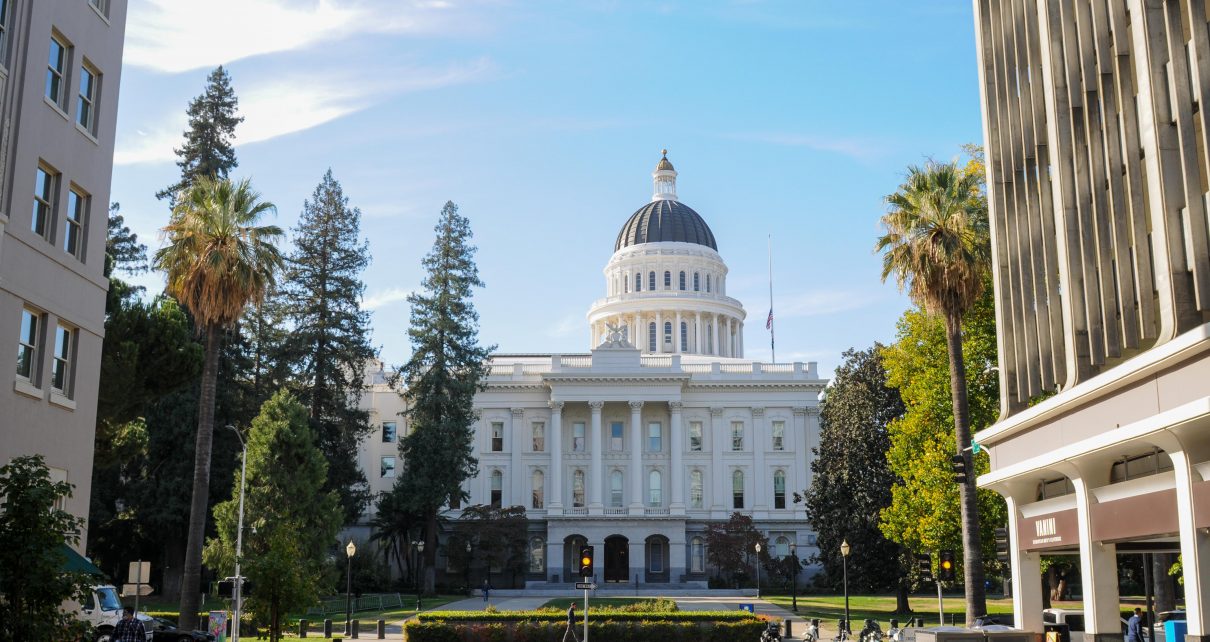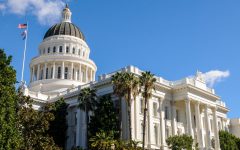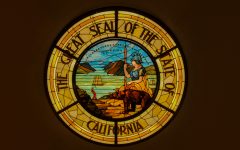
California State Capitol. (Photo: Kevin Sanders for California Globe)
Underground Regulations and California’s Administrative Procedure Act
How have California’s courts viewed underground regulations by the state’s rulemaking bodies?
By Chris Micheli, October 28, 2021 2:15 am
The Office of Administrative Law (OAL) is charged with ensuring that agency and department regulations are “clear, necessary, legally valid, and available to the public.” OAL is responsible for reviewing proposed regulations by California’s more than 200 state agencies and departments that have rulemaking authority.
The formal rulemaking process is established by the California Administrative Procedure Act (APA) and the APA sets forth the criteria by which OAL reviews all of those regulations. OAL reviews regular and emergency rulemaking projects, as well as challenged “underground” regulations.
On the OAL website (www.oal.ca.gov), readers can track on a table the list of rulemaking actions submitted to OAL for review. This list is updated daily per OAL. The website also contains a listing of underground regulation petitions that are under review by OAL. (https://oal.ca.gov/underground_regulations/underground-regulations-under-review/).
Concerning the review of alleged underground regulations, the role of OAL is specified in the California Code of Regulations (CCR), Title 1, Division 1, Chapter 2, which is titled “Underground Regulations.”
In Section 250(a), it provides the following definition: “’underground regulation’ means any guideline, criterion, bulletin, manual, instruction, order, standard of general application, or other rule, including a rule governing a state agency procedure, that is a regulation as defined in Section 11342.600 of the Government Code, but has not been adopted as a regulation and filed with the Secretary of State pursuant to the AP A and is not subject to an express statutory exemption from adoption pursuant to the APA.”
In CCR Section 260, the submission of underground regulation petitions is discussed. Section 270 deals with the OAL review of these petitions. And, Section 280 describes the suspension of underground regulation actions. In terms of “underground regulations,” OAL is charged with reviewing any such challenged regulatory agency actions by way of a petition filed with OAL.
According to the OAL, “if a state agency issues, utilizes, enforces, or attempts to enforce a rule without following the APA when it is required to, the rule is called an ‘underground regulation.’ State agencies are prohibited from enforcing underground regulations.” If an individual or entity believes a state agency or department has issued an alleged underground regulation, that issuance can be challenged by filing a written petition with OAL.
If OAL accepts the petition for review, then OAL may issue a determination. According to OAL, this program is informally known as the “Chapter Two Unit,” or “CTU,” because OAL’s regulations regarding underground regulations are found in California Code of Regulations, Title 1, Chapter 2. The OAL website provides information on underground regulations and how to submit a written petition to OAL alleging an underground regulation.
OAL’s review of an alleged underground regulation is limited to a 3-step analysis to determine whether the alleged underground regulation must be adopted as a regulation pursuant to the APA. First, is the policy or procedure either a rule or standard of general application, or a modification or supplement to such a rule? Second, has the policy or procedure been adopted by the agency to either implement, interpret, or make specific the law enforced or administered by the agency, or govern the agency’s procedure?
If the answer to these two questions is “yes,” then the challenged rule is a regulation. However, before a determination is complete, OAL must review the final step of the analysis. Has the policy or procedure been expressly exempted by statute from the requirement that it be adopted as a “regulation” pursuant to the APA?
If the answer to this final question is yes, then the underground regulation did not have to go through the APA process. However, if the answer to this last question is no, then the rule is an underground regulation and cannot be enforced by the agency or department. Instead, it must go through the formal rulemaking process pursuant to the APA.
Finally, readers should be aware of Government Code Section 11340.5(e) which provides that, if an interested person has already begun litigation challenging an underground regulation, a determination issued by OAL may not be considered by the court in that pending litigation. Those challenging an alleged underground regulation should determine whether they want to pursue OAL review of the agency action, or whether to go directly to court to challenge it.
How have California’s courts viewed underground regulations by the state’s rulemaking bodies?
In terms of a definition, the courts have ruled that any regulation not properly adopted under the APA is labeled an “underground regulation.” An OAL determination that a particular administrative guideline is an underground regulation is not binding on the courts, but it is entitled to deference. Davenport v. Superior Court (2012) 202 Cal.App. 4th 665, review denied; People v. Medina (2009) 171 Cal.App. 4th 805, review denied
Additionally, the courts have noted that an underground regulation is a regulation that a court may determine to be invalid because it was not adopted in substantial compliance with the procedures of the APA. Excelsior College v. Board of Registered Nursing (2006) 136 Cal.App. 4th 1218; Patterson Flying Service v. Department of Pesticide Regulation (2008) 161 Cal.App. 4th 411, rehearing denied; Fisher v. State Personnel Board (2018) 235 Cal.Rptr. 3rd 382
There are some exceptions to the “underground regulation” rule. For example, agency advice or opinion letters are not characterized as underground regulations violative of the APA and therefore may properly be considered when a court is considering the applicability of a wage order. United Parcel Service Wage and Hour Cases (2010) 190 Cal.App. 4th 1001
In addition, protocols following mandatory guidelines are deemed regulations by the OAL, which may not be used by a state agency until they are formally adopted, following compliance with procedural requirements under the APA. People v. Taylor (2009) 174 Cal.App. 4th 920
What is or is not an underground regulation is an important determination. If a state executive branch agency has engaged in underground rulemaking, the action is invalid and the agency would have to complete the formal rulemaking pursuant to the APA in order to follow that prior guidance.
- Relief from Child Support Orders - December 14, 2025
- County Harbor Improvement - December 14, 2025
- Enforcement of Judgments in California - December 13, 2025





3 thoughts on “Underground Regulations and California’s Administrative Procedure Act”